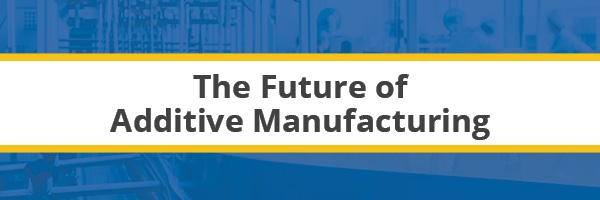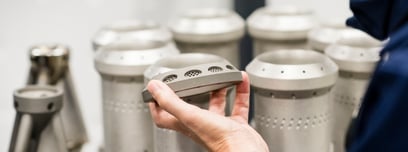
Ever since its inception, 3D printing has been a hot-topic for research in the industrial world, as it introduced time and cost benefits that were otherwise inaccessible. Building on the very same base, Additive Manufacturing has proven to be an even more beneficial technique as it has fused together the sleekness of 3D printing and wide selectivity of manufacturing materials.
3D printing and Additive Manufacturing technologies however are clearly distinguishable as the latter has a more practical purpose. Additive Manufacturing makes use of a digital 3D design of a product and its fabrication using materials like plastic, metal, fiber, etc. through a layer-by-layer approach. In this manner, an entire product can be manufactured with minimal manual involvement, increasing accuracy in refinement, and saving precious company resources.

Technology of the Future
Additive Manufacturing has always been referred to as a technology of the future as it has always given a robotic perception to viewers. In fact, the technology is already implemented in many industries (from medical to automobile) who wish to reduce labor tasks and increase precision. Still, research is ongoing and there will be several decades until the entire manufacturing process can be automated.
Companies who have switched to the technology have reaped several rewards, which is why the future of Additive Manufacturing is increasing. One of the biggest problems with Additive Manufacturing today is the lack of standardization.
As stated by Joe Manzo, Executive Officer at Titan Industries:
“Currently, these standards do not exist, and qualification must be done on a part-by-part basis, which eliminates one of the major economic benefits of additive manufacturing. The development of quality standards and equipment certification will allow industry to fully take advantage of the benefits of additive manufacturing."
Like the Internet of Things (IoT), Additive Manufacturing will need standard operating procedures to improve compatibility and interoperability.
Which industries are bound to reap the most rewards?
With aerospace industries, safety has always been a necessity in all products falling within this category, however due to the scale of associated products and corresponding human involvement, risks have always been high. Additive Manufacturing can deeply make its way into the industry as with the aid of accurately built prototypes, all aspects of design and safety can be checked.
The medical industry has been accelerated with the latest innovations in engineering, however it has only been recently that they have implemented the use of robots to rid people of diseases. However, the anatomy of the human body makes it extremely difficult to produce a “one size fits all” solution. The problem can be easily countered with the use of Additive Manufacturing through which only a tweak in the parameters can provide instant life-saving solutions from organs to bones.
The possibilities are endless, which would continue to multiply as scientists and engineers continue to make breakthroughs within the world of industrial automation.
Interested in learning more? Speak to an expert at Premier Automation!
Photo courtesy of www.siemens.com.



